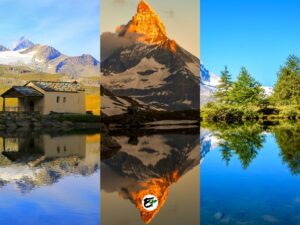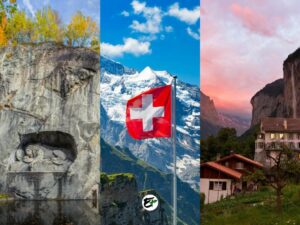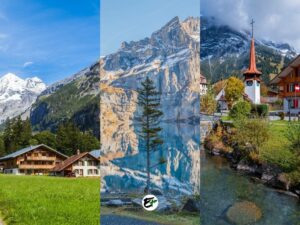Zermatt Planning Checklist & Guide: Summer, Autumn, Spring
For many of us, Zermatt is a once-in-a-lifetime destination. Given its high cost, remote location nestled in the Alps, and iconic status, it’s easy to understand why. Visitors are always compelled to prepare thoroughly before their trip, ensuring that they make the most of their time and money.
If you’re planning a visit to Zermatt, there’s more to consider than just the top attractions. Firstly, you need to determine the best time for your visit that aligns with your desired experiences. Secondly, as an outdoor destination, the weather plays a significant role in your experience. Therefore, researching the climate and preparing a suitable packing list is also essential.
There are more things to consider for a trip to Zermatt, though. In this guide, I’ll walk you through each one. Stay with me until the end, as I’ll share every tip that I know to help you make the most of your visit to this charming alpine town.
This post contains affiliate links. I may receive a tiny commission at no additional cost to you.
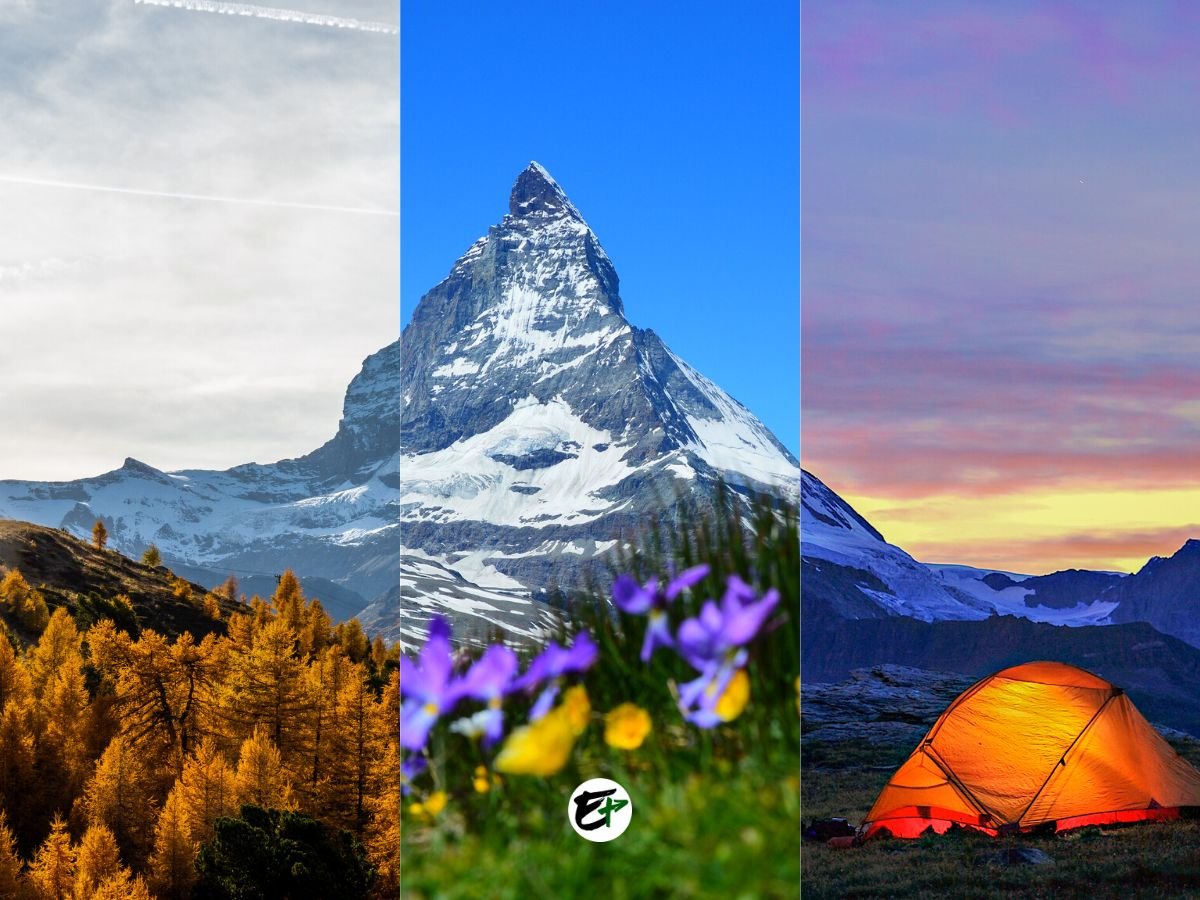
Use the table of contents to skip to topics.
This guide focuses on trips during the warmer months, specifically the spring shoulder season, summer, and autumn shoulder season. I must admit, I’m not a big fan of winter travels. So, I won’t be covering that in this guide.
Is Zermatt Worth Visiting?
Before you plan your trip to Zermatt, it’s worth considering if this is the right destination for you. Ask yourself: is this my desired destination, or am I just joining the hype?
Honestly, no matter what your answer may be, if you focus on the positive aspects and beautiful experiences that Zermatt offers, you’re bound to have an unforgettable trip. Just imagine experiencing all the incredible things that await you in Zermatt. I believe you won’t have any second thoughts to visit Zermatt.
Personally, I don’t think Zermatt is just another destination in the Alps. The unique and dramatic sceneries in Zermatt, largely thanks to the Matterhorn, set it apart. Yes, Zermatt is expensive, but if it’s about a once-in-a-lifetime experience and all the breathtaking views awaiting you at this destination, would you say no?

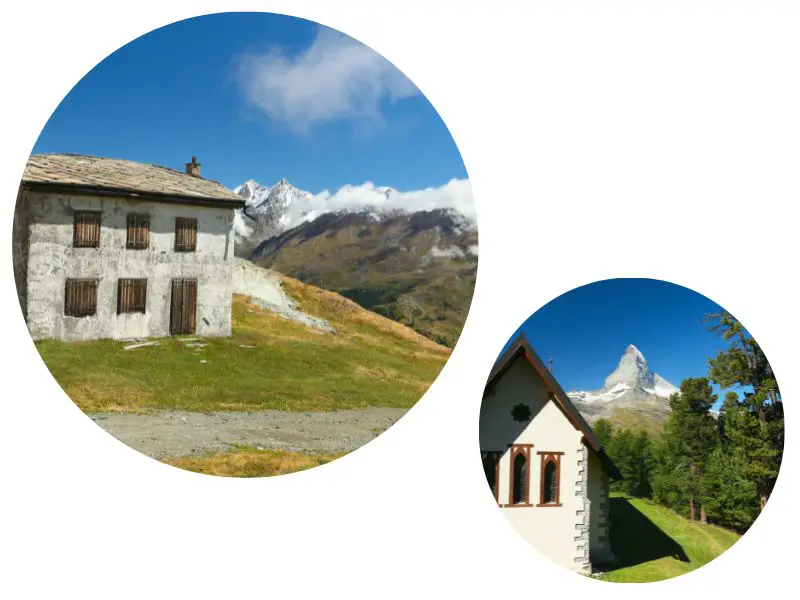
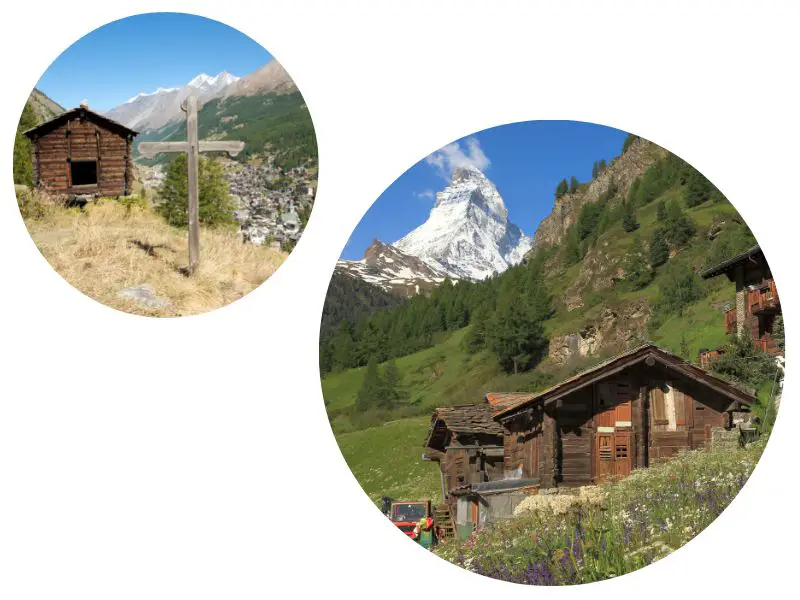
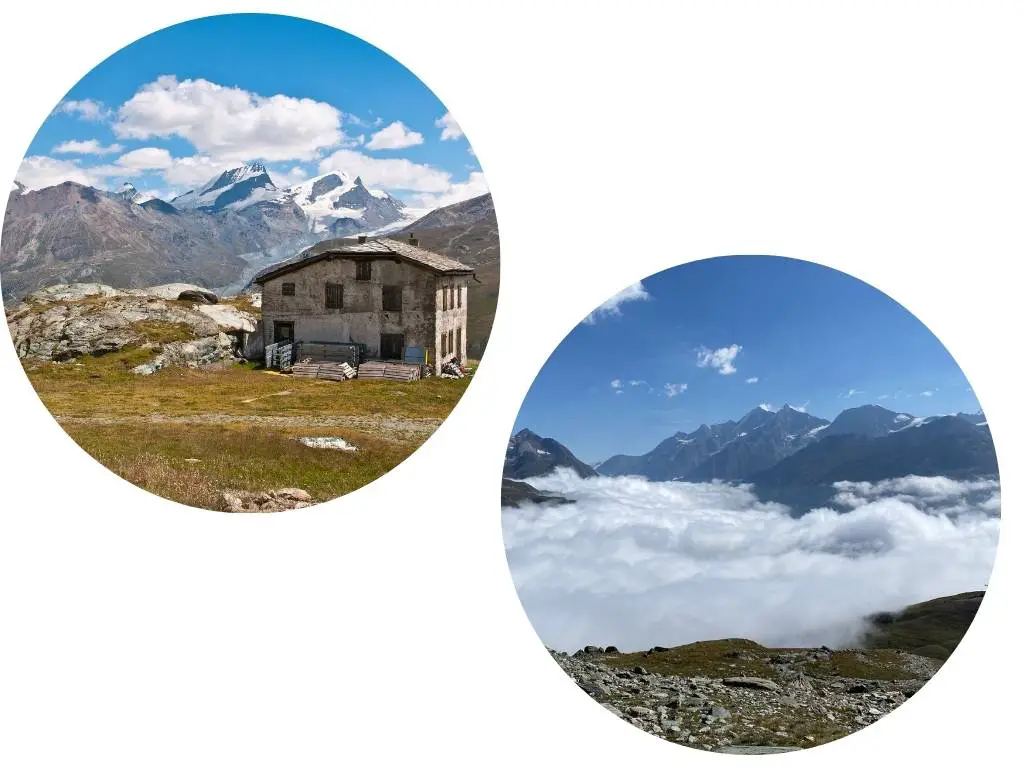
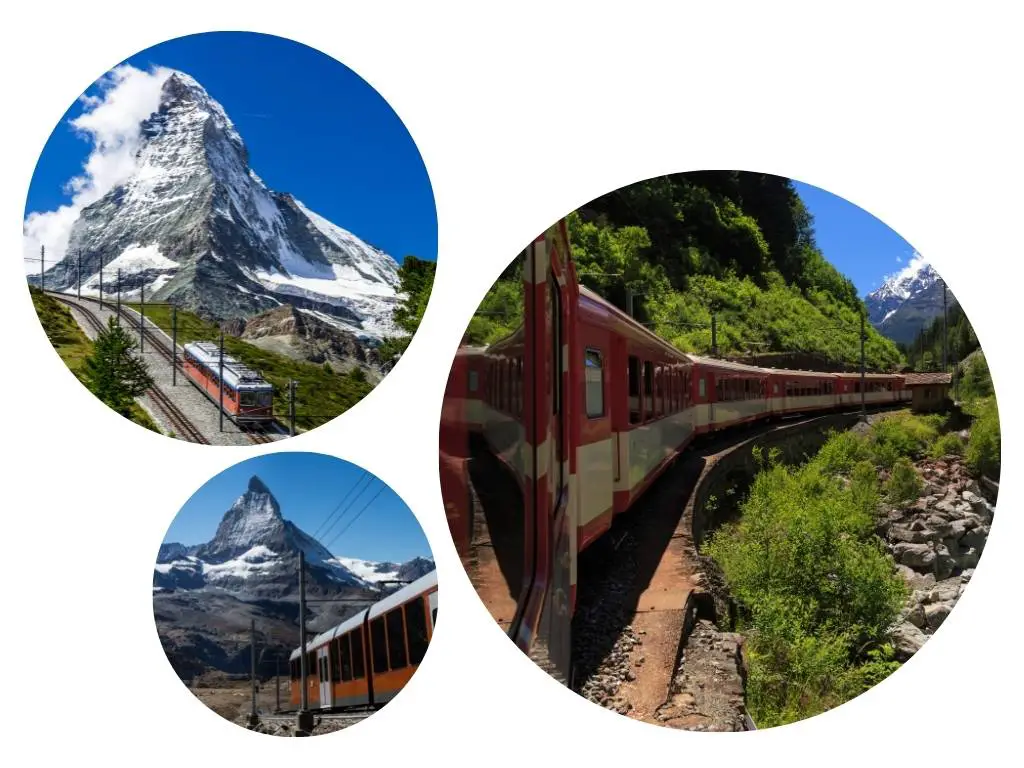
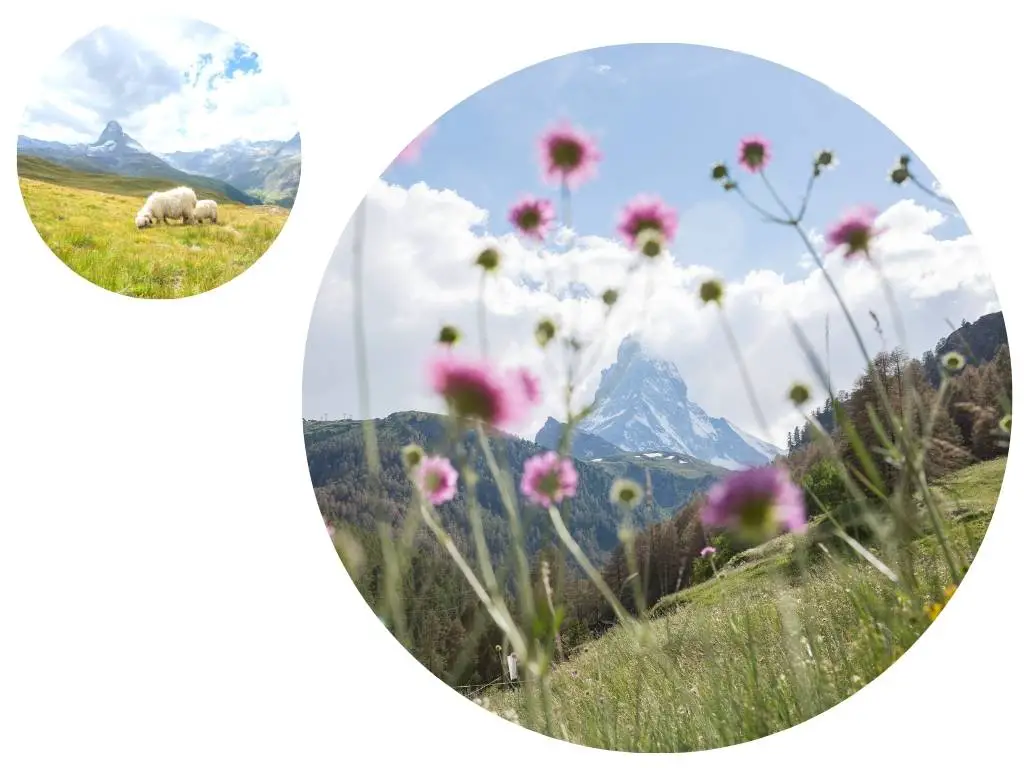
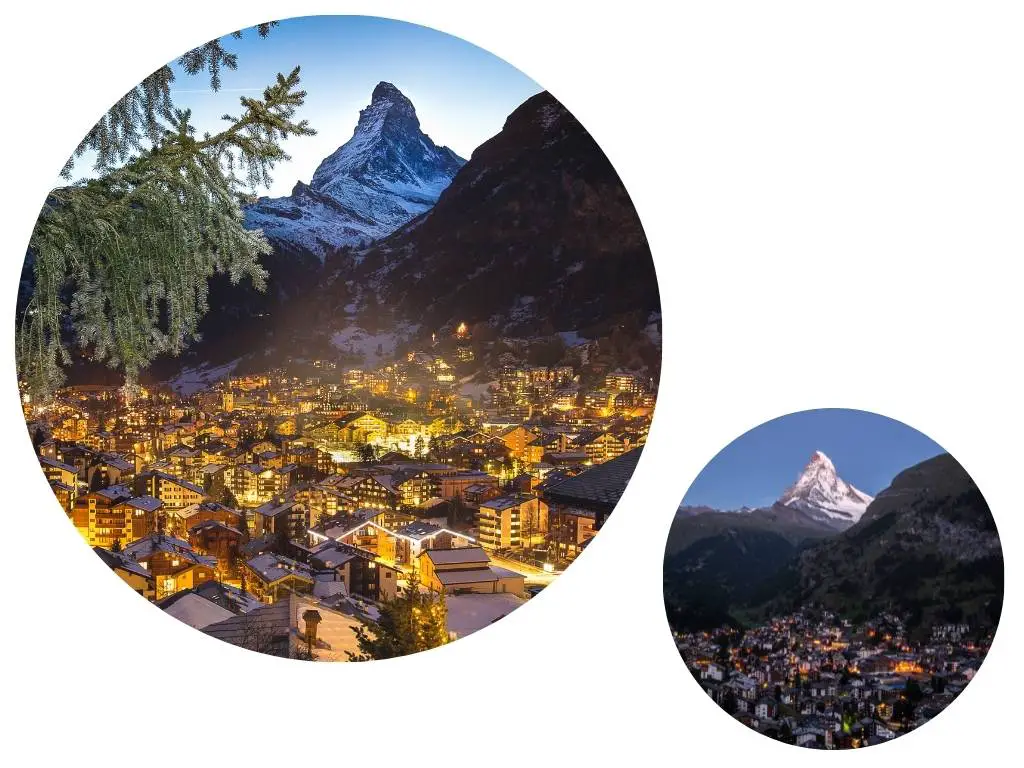
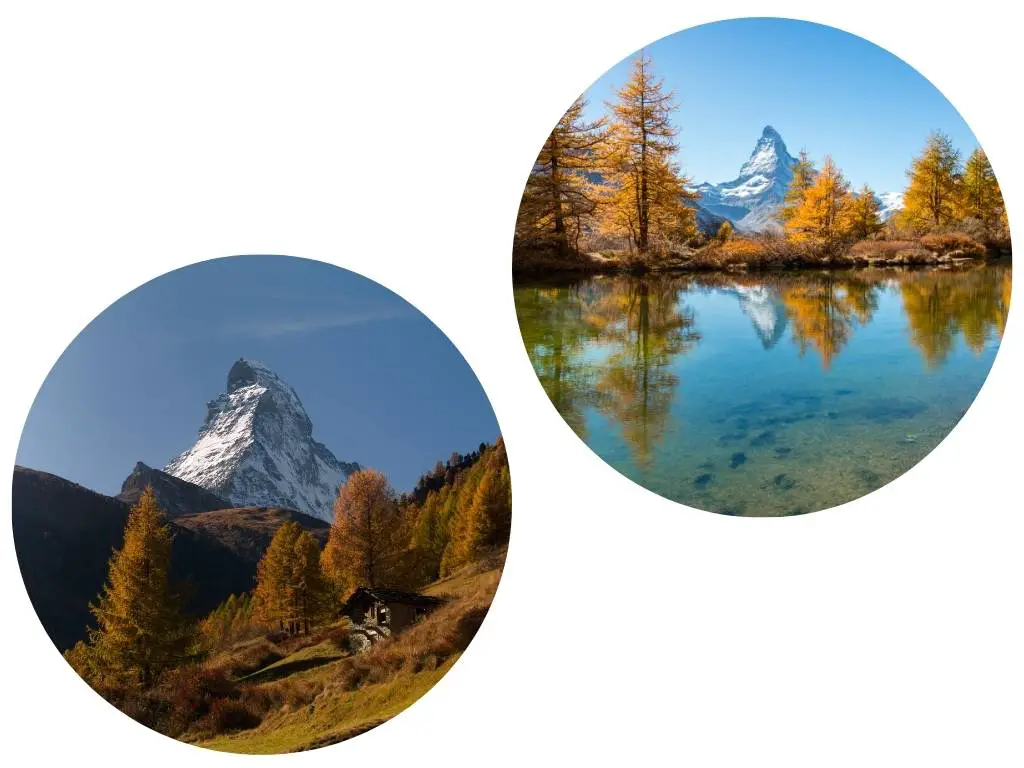
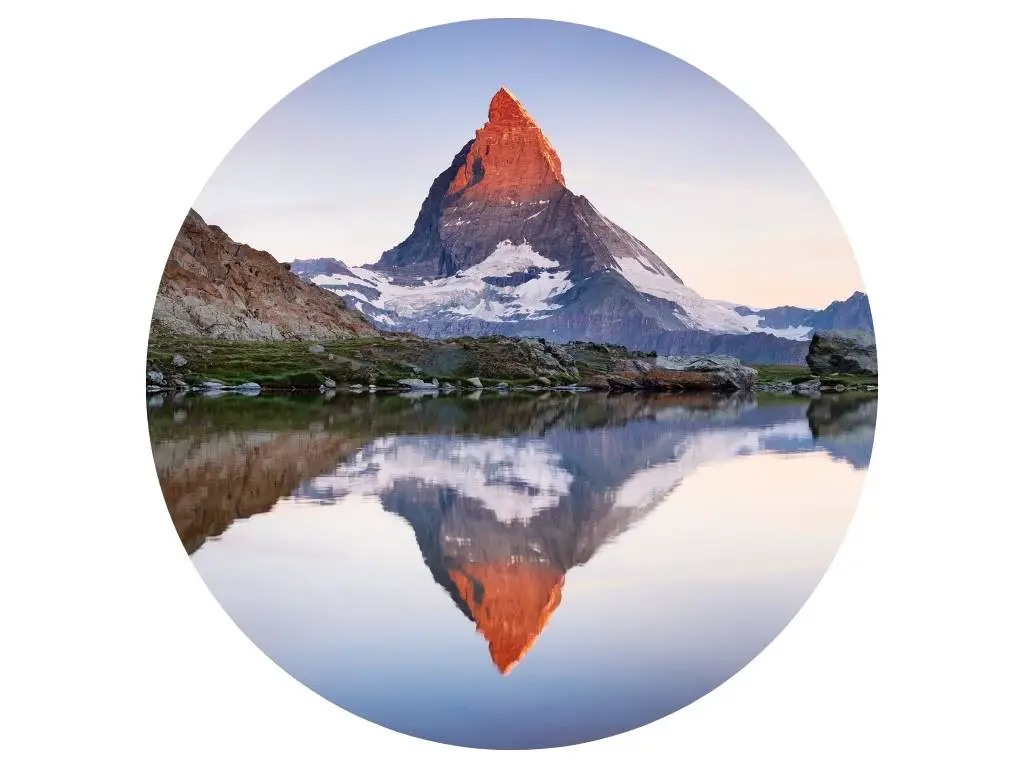
Just keep in mind, Zermatt isn’t the only destination in Switzerland that offers a once-in-a-lifetime experience. If you think it might be a while before you return to Switzerland, consider exploring beyond Zermatt during your trip.
Despite its small size, Switzerland is packed with unforgettable travel experiences. From the heavenly valley of Lauterbrunnen to the medieval charm of Gruyeres, you won’t find yourself bored, even if you spend two weeks traveling around the country.
When to Visit Zermatt?
Short answer: For first timers, the summer and shoulder seasons are the ideal times to visit Zermatt.
Most tourist attractions and restaurants are open and accessible to visitors during the summer and shoulder seasons. The longer daylight hours provide more time to explore. Additionally, numerous festivals and events occur in Zermatt during these times, adding a special touch to your visit.
The weather is generally pleasant during these seasons and the surroundings sceneries are more breathtaking. Spring brings flowery meadows, summer offers lush green forests, and autumn presents a unique mountain appearance due to the fall foliage.
Just don’t forget to note that summer is the period when Zermatt attracts the highest number of visitors, resulting in longer queues and a less serene experience in certain mountain areas, such as picturesque lakes and hiking trails. However, the benefits of visiting during these seasons outweigh these minor inconveniences.
I don’t completely rule out a winter visit to Zermatt, though. Particularly for winter sports enthusiasts, it’s worth noting a few things. Zermatt’s infrastructure, coupled with a modern app that provides information about ski pistes, cable cars, and cogwheel trains, makes it incredibly easy to enjoy the snow.
However, again, a winter visit does come with a few caveats. The village may resemble a winter wonderland, but Zermatt’s beauty isn’t at its peak during this season. The scenic lakes, which usually reflect an inverted image of the Matterhorn, are frozen. The Five Lakes Walk is also inaccessible.
Furthermore, hiking trails to some of Zermatt’s most picturesque spots, such as the Hamlet of Zmutt and Hamlet of Herbrigg, might be closed. The Charles Kuonen Suspension Bridge, the longest of its kind, is also closed.
On the other hand, a summer visit allows you to explore these amazing attractions. And guess what? You can still ski and sled in Zermatt during the summer! Zermatt is a summer ski resort and the ski pistes, located in Klein Matterhorn, are just a cable car ride from the village.
How Many Days in Zermatt?
To put it briefly, you can cover Zermatt’s highlights—the Gornergrat or Klein Matterhorn, enjoy a quick hike to one of Zermatt’s scenic viewpoints, and explore one of Zermatt’s hidden treasures—all in two days. But if you’ve traveled a long way, it’s advisable to stay a bit longer to truly soak in the Zermatt experience.
Make the most of that expensive plane ticket! LOL.
Honestly, the length of your stay in Zermatt depends on several factors. You can ask yourself the same questions I asked myself:
- Am I visiting Switzerland because of Zermatt?
- Am I visiting other places in Switzerland that offer the same experiences as Zermatt?
- How much is my budget for this trip?
- When will I visit Zermatt?
Anyhow, if Zermatt is your dream destination and assuming that you are visiting during non-winter season, you can fill four days with memorable experiences. On your first day, spend time exploring the village. Discover the story of the Matterhorn’s first ascent at the Matterhorn Museum. In the evening, visit one of the scenic lakes near Sunnegga to watch the sunset.
Allocate the entire second day to visiting Gornergrat. During this day, you can experience a ride on a scenic cogwheel train, observe the Gorner Glacier, hike down to Riffelsee, and photograph the Matterhorn. Spend the evening at a spa to relax and prepare for another day of adventure.
On your third day, try some hiking. You could choose the Matterhorn Glacier Trail, the Zermatt Höhbalmen Loop Trail, or a hike to the Charles Kuonen Suspension Bridge. If you have extra time, fly over Zermatt on a tandem paragliding experience.
Conclude your trip with a visit to Klein Matterhorn on the fourth day. Afterward, reward yourself by discovering and tasting some authentic Swiss dishes in the village.
One factor that might shorten your stay in Zermatt is if you’re planning to visit other similar places in Switzerland. For instance, if you’re visiting one of the picturesque villages in the Swiss Alps, you might choose to skip some attractions in Zermatt.
Are you considering a visit to Grindelwald and Bachalpsee or Kandersteg and Oeschinensee? If so, visiting the lakes in Zermatt may not be necessary. If your itinerary includes Lucerne and a trip to Mount Pilatus, you might want to save the Gornergrat cogwheel train experience for another time. Are you planning to visit Interlaken and Jungfraujoch? The experience there is quite similar to visiting Klein Matterhorn.
Where to Stay in Zermatt?
Now that you’re aware of your duration of stay in Zermatt, let’s look at where you could stay during your trip. In Zermatt, you’ve got three main options: the village, the resort area which is outside the village, and a place called Täsch. Each of these spots has its own set of benefits and drawbacks.
Quick answer: If you’re keeping an eye on your budget, Täsch is your best bet for accommodation. On the other hand, if you want everything from eateries to public transport at your doorstep, you should consider staying in the village center. Now, if you’re the adventurous type and want to concentrate on a particular activity, Zermatt’s resort area is your go-to spot.
Let’s get into the details of each of these options.
- The Village is the heart of Zermatt. It’s the place where you’ll arrive by train.
- The Resort Area refers to the regions surrounding the village. It’s the hub of all activities and adventures.
- Täsch is an area located very close to Zermatt. Travelers can park their cars here before proceeding to Zermatt, which is a car-free village. We’ll discuss how to reach this village later.
| Area in Zermatt | Pros | Cons |
|---|---|---|
| Zermatt Village | Zermatt village is the ideal base for exploring the area. Major tourist attractions such as Sunnegga, Gornergrat, and Matterhorn Glacier Paradise are easily accessible from the village via cable car or cogwheel trains. In addition, this location offers a broad selection of hotels and restaurants. Two of Zermatt’s top attractions, the Matterhorn Museum and Hinterdorf Street, are also located here. I recommend staying here if it is your first time in Zermatt and you want to have the convenience to fully experience Zermatt. |
Given the convenience this location offers visitors, accommodation and meal prices in the village can be significantly higher. This is particularly true during peak season. At these times, you can also expect bustling scenes with streets filled with people. This may not be ideal for travelers seeking a more peaceful stay. |
| Zermatt Resort Area | The area outside the village is scattered with accommodations, providing quick access to top attractions, outdoor activities, and stunning views of the Matterhorn. One such place is the 3100 Kulmhotel Gornergrat. These accommodations offer a unique variety, from mountain huts and chalets to luxurious 4 and 5-star hotels like Riffelalp 2222. There’s even accommodation in the form of an igloo during the winter season! Compared to the village, the resort area offers quieter accommodations. |
Depending on the location, accommodation options can be very limited. This is particularly true for areas like Gornergrat. Also, your itinerary in Zermatt may not be very flexible, especially if your chosen location is secluded. Most importantly, when choosing a place to stay in the Zermatt Resort Area, it’s important to always consider the transportation services’ schedule and the weather. |
| Täsch | Compared to the Zermatt village and Resort Area, hotel prices in Täsch are relatively lower. Additionally, if you’re traveling by car in Switzerland, you may be able to take advantage of the free parking provided by the hotel. |
While the prices in Täsch are lower, it’s important to remember that it’s a bit further away from Zermatt and the area’s top attractions. Täsch also offers fewer amenities. And if you choose to stay here, you’ll need to plan your day in Zermatt carefully. Since you can’t easily return to your hotel during the day, perhaps for a rest or to pick up something, a well-thought-out itinerary is essential. |
You can find the best hotel deals in Zermatt and Täsch here.
A Day Trip to Zermatt
While it’s recommended to stay in Zermatt for at least two days, the option of a day trip to Zermatt is still viable. This is particularly true if your Switzerland trip is only 3 or 4 days long.
The good news is that a day trip to Zermatt can be undertaken from Switzerland’s largest cities. Even from Milan, a day trip to Zermatt is possible! However, you should be prepared to spend a few hours on the road or train to reach Zermatt, as it is nestled deep in the mountains.
If you’re planning a day trip to Zermatt from Zurich or Basel, expect to spend at least 3 hours and 15 minutes traveling one way. From Bern, you can ideally reach Zermatt within 2 hours and 15 minutes. If you’re coming from Milan, a scenic 3-hour-and-30-minute drive will take you to Zermatt (Täsch).
Are you planning a day trip to Zermatt from these cities? You can find some useful articles below that will help you enjoy your time in these cities.
- A Complete Guide to Zurich: Discover Why It’s Worth a Visit
- 7 Most Beautiful Places To Visit In Basel Switzerland
- How to Spend 3 Days in Bern Itinerary: 22 Things to Do
- Milan In-Depth Explorer’s Guide: 10 Reasons to Visit Milan
How to Get to Zermatt?
Now that we’ve sorted out the timing of your visit and your accommodation in Zermatt, let’s discuss how you’ll get there.
One of the best things about visiting Switzerland is how easy it is to get around. The country’s excellent train system makes it a breeze to visit places like Zermatt. If you’re someone who likes to travel without a car, you’ll really notice the difference. This is especially true when you compare Swiss Alps destinations to other mountain spots, like Cortina d’Ampezzo in Italy’s Dolomites.
Good to know: The most affordable and efficient way to reach Zermatt is by train. You could also drive, but remember, Zermatt is a car-free village. You can only drive as far as Täsch, where you can park your car and then explore Zermatt.
Click here to read more information about getting to Zermatt by car.
- If you’re planning to drive to Zermatt, it’s important to know that Zermatt is a car-free zone. This means you can only drive your car up to a town called Täsch, which is about 5 km away from Zermatt. If you drive to Zermatt without permission, you could face heavy fines.
- In Täsch, you’ll find plenty of parking options. The Matterhorn Terminal has over 2,100 covered parking spaces. Plus, there are more than 1,000 additional parking spaces offered by private parties like taxi companies or hotels.
- Once you’ve parked your car in Täsch, you can continue your journey to Zermatt by train, taxi, or limousine. There’s a shuttle train that operates every 20 minutes and the trip to Zermatt only takes about 12 minutes.
- The shuttle service between Täsch and Zermatt is quite convenient. It runs every 20 minutes from early morning until late at night, and even all night on weekends. The journey only takes about 12 minutes.
- You can buy tickets at the kiosk, from ticket machines, or even through the Matterhorn app. A return journey will cost you not more than CHF 20, but the ticket is valid for a return journey within 30 days of your chosen travel date. If you have a Swiss Travel Pass, you can use it for this journey.
- As for your luggage, there’s a baggage cart that you can push directly to the platform level with the shuttle train cars. Your luggage can travel conveniently in the same shuttle train.
- You can book your parking in Täsch here and the shuttle service to Zermatt here.
If you’re flying into Switzerland and Zermatt is your first stop, the best cities to start your journey are Zurich or Basel. These are the two largest cities in Switzerland and they have the most flight connections. They also offer the quickest train rides to Zermatt. Bern is another option, but it only has regional flights. From these cities, you can reach Zermatt in ideally 2 to 4 hours.
Here are some tips:
- Get the SBB App — the Swiss Federal Railways, or SBB, has an app that gives you train times and updates. It’s a great tool for getting around.
- Always be on time — Swiss trains are famous for being punctual. They don’t wait at stations for long, so be ready to get on or off quickly.
- Secure a Swiss Travel Pass — If you’re planning to stay in Switzerland for more than three days and you’re thinking of using the train to get around, a Swiss Travel Pass might be a good idea. It could end up saving you money because it gives you unlimited travel for less than what you’d pay for individual tickets. When it comes to Zermatt, having this pass means you’ll get a discount on several attractions. These include the Gornergrat railway, the Klein Matterhorn Glacier Paradise lift, the Sunegga funicular, and the Rothorn cable car.
Good to know: Zermatt is also a stop/destination of one of the grand train tour of Switzerland—Glacier Express. It’s a scenic train ride (covered by Swiss Travel Pass) that starts from St. Moritz and ends in Zermatt, crossing 291 bridges and passing through 91 tunnels along the way.
The entire journey takes about eight hours. The train operates all year round, and the panoramic windows offer an exceptional view of the mountainous landscape. Plus, you can savor local specialties from the on-board kitchen with restaurant service.
Where to Eat in Zermatt?
Zermatt is known for its unforgettable adventures and stunning natural scenery. However, this doesn’t mean it lacks a diverse range of delicious cuisines. As Zermatt is a popular destination for travelers worldwide, it’s no surprise to find Mediterranean, Italian, French, Asian, Mexican, Indian, and various international cuisines in this town.
Since I’m not a foodie, I can’t recommend the best places to eat. You can start exploring the different culinary experiences on Zermatt’s official website.
You might be wondering how to save money on food. Zermatt is a beautiful but pricey destination, especially food! However, you don’t have to break the bank to get full. Here are some tips to help you save money on food in Zermatt:
- Cook your own food: You can save money by buying groceries at local supermarkets or bakeries and making your own meals at your accommodation. You can also pack a picnic lunch to enjoy on the trails or at the picnic areas with fire pits.
- Eat out for lunch: If you want to try local cuisine, lunch is usually cheaper than dinner. Some restaurants offer lunch specials that include a salad, a main course, and a dessert. You can also look for restaurants outside the city center or near tourist attractions, where prices may be lower.
- Drink tap water: Drinks are very pricey in Switzerland, especially at kiosks or restaurants. Tap water is safe and tasty in Zermatt, and you can find many fountains with free drinking water around Zermatt. You can also ask for tap water (Hahnenwasser or Leitungswasser) at restaurants, but some may charge a small fee for the glass.
- Choose cheaper dishes: Some dishes are more affordable than others in Switzerland, depending on the ingredients and the preparation. For example, you can order sausage, rosti, or cheese-based dishes like fondue or raclette, which are typically cheaper than meat or fish dishes.
How to Get Around Zermatt?
Zermatt has trains, electric buses, and cable cars that make it easy to get around. However, you should also be prepared to walk a lot, especially if you want to visit the different viewpoints and picture spots. Therefore, bring the most comfortable hiking shoes that you have.
If you are adventurous and you want to get to different places that do not have public transportation, you can consider renting a bicycle. Zermatt has a program for cyclists that you might want to try for a different way to explore Zermatt.
You can buy bike tickets to access the cable cars and lifts that take you to the higher altitudes, where you can enjoy the panoramic views and the challenging trails. You can also book bike packages that include accommodation, bike rental, and lift tickets. For more information about using a bicycle in Zermatt, you can check Zermatt’s official website.
Here are some tips you might find useful in getting around Zermatt:
- For your convenience, you can use the Matterhorn App to buy tickets to the different public transportation in Zermatt. The app is an all-in-one tool you can use in nearly all essential activities in Zermatt.
- You can use the buses for free if you have a lift pass or ticket for any of the main cable cars or trains in Zermatt. You can also use the buses for free if you have a season pass or a Swiss Travel Pass.
- You can check the live status of the cable cars and lifts on the Zermatt website to see which ones are open and how busy they are.
- Before you go to your mountain destination using the cable cars or cogwheel train, check the live webcams to see if the view is worth it.
- Make your trip around the village seamless by checking Zermatt e-bus schedule and the status of each bus stop in Zermatt.
- For a special experience, you can enjoy some special privileges by booking a VIP gondola on the 3S Matterhorn Glacier Ride, which has a glass floor, leather seats, and a champagne service.
Essential: Matterhorn App
If you want to make your trip to Zermatt twice more convenient, you got to download the Matterhorn App. The Matterhorn App is an app that gives you live updates and tips for your visit to Zermatt. You can download it for free from the app store or Google Play. It works in German and English.
With the app installed on your phone:
- You can see the weather, webcam images, and news.
- Check the status of the lifts, slopes, bike and hiking trails, and roads.
- Discover the best places to eat, drink, shop, and have fun in Zermatt.
- Book your tickets, accommodation, and packages for your trip.
Things to Bring in Zermatt
Before you head to Zermatt, make sure you bring all the essential things you might need to use during your visit. Here is the checklist:
- Hiking boots or shoes. Zermatt is a paradise for hikers, with over 400 km of trails that offer stunning views of the Matterhorn and other peaks. You will need a pair of hiking boots or shoes that are comfortable, sturdy, and waterproof. You can also rent hiking poles or snowshoes if you want to explore the winter hiking trails.
-
Layers of clothing and accessories. Zermatt has a mountain climate, which means it can be cold, windy, and snowy even in spring and autumn. You will need to dress warmly and wear layers that you can adjust depending on the temperature and activity. Some essential items are:
- A waterproof jacket (spring to autumn)
- a fleece or sweater (spring to autumn)
- a hat (spring to autumn)
- gloves (spring to autumn)
- scarves (spring to autumn)
- sunglasses (spring to autumn)
- sunscreen (spring to autumn)
- such as shorts (summer)
- t-shirts (summer)
- sandals (summer)
- jacket or a sweater for the evenings or higher altitudes. (summer)
- A power adapter and a converter. Switzerland uses type C and J plugs. You will need a power adapter to plug in your devices, and a converter to match the voltage if your devices are not compatible with 230V.
- A reusable water bottle and a thermos. Zermatt has many public fountains where you can fill up your water bottle for free, and the water is fresh and clean. A thermos will keep your drinks hot or cold, depending on the season and your preference.
- A headlamp and a whistle. If you plan to go hiking or skiing in the dark, you will need a headlamp to see the trail and a whistle to alert others in case of emergency. These items are also useful for camping or staying in mountain huts.
- A first aid kit and some medication. Zermatt is a high-altitude destination, which means you might experience some symptoms of altitude sickness, such as headache, nausea, or dizziness. You should bring some medication to prevent or treat these symptoms, as well as a first aid kit for minor injuries or illnesses.
- For Europeans: a valid passport. Switzerland is not part of the European Union, so you will need to show your passport at the border and have adequate insurance coverage in case of emergencies.
What to Visit Next After Zermatt?
Alright! You have learned everything you need to plan your visit to Zermatt. So, let’s now talk about the places where you can you do after Zermatt. You have many options to choose from.
Zermatt is in the south of Switzerland, so you can go south to northern Italy or north to other beautiful places in Switzerland. If you go north, you can enjoy the cities near the Swiss Alps that have both amazing alpine scenery and cultural heritage.
The nearest city to the alps from Zermatt is Sion and Brig along the Rhone Valley. You can also visit Montreux, Thun, and Lucerne which are not too far from Zermatt. These cities are closer than Bern, Zurich, and Geneva, the major cities of Switzerland.
If you go south to Italy, you can visit Lake Como, Bergamo, or Milan. Lake Como has charming lakeside villas, Bergamo is a historic town in the pre alps, and Milan has the most famous Gothic Cathedral in the world. You can reach these places in Italy from Zermatt in less than 4 hours by public transportation or car.
Save it on Pinterest.




